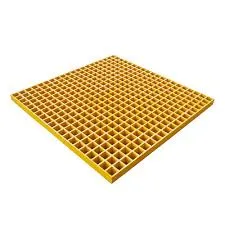
-
 Afrikaans
Afrikaans -
 Albanian
Albanian -
 Amharic
Amharic -
 Arabic
Arabic -
 Armenian
Armenian -
 Azerbaijani
Azerbaijani -
 Basque
Basque -
 Belarusian
Belarusian -
 Bengali
Bengali -
 Bosnian
Bosnian -
 Bulgarian
Bulgarian -
 Catalan
Catalan -
 Cebuano
Cebuano -
 China
China -
 China (Taiwan)
China (Taiwan) -
 Corsican
Corsican -
 Croatian
Croatian -
 Czech
Czech -
 Danish
Danish -
 Dutch
Dutch -
 English
English -
 Esperanto
Esperanto -
 Estonian
Estonian -
 Finnish
Finnish -
 French
French -
 Frisian
Frisian -
 Galician
Galician -
 Georgian
Georgian -
 German
German -
 Greek
Greek -
 Gujarati
Gujarati -
 Haitian Creole
Haitian Creole -
 hausa
hausa -
 hawaiian
hawaiian -
 Hebrew
Hebrew -
 Hindi
Hindi -
 Miao
Miao -
 Hungarian
Hungarian -
 Icelandic
Icelandic -
 igbo
igbo -
 Indonesian
Indonesian -
 irish
irish -
 Italian
Italian -
 Japanese
Japanese -
 Javanese
Javanese -
 Kannada
Kannada -
 kazakh
kazakh -
 Khmer
Khmer -
 Rwandese
Rwandese -
 Korean
Korean -
 Kurdish
Kurdish -
 Kyrgyz
Kyrgyz -
 Lao
Lao -
 Latin
Latin -
 Latvian
Latvian -
 Lithuanian
Lithuanian -
 Luxembourgish
Luxembourgish -
 Macedonian
Macedonian -
 Malgashi
Malgashi -
 Malay
Malay -
 Malayalam
Malayalam -
 Maltese
Maltese -
 Maori
Maori -
 Marathi
Marathi -
 Mongolian
Mongolian -
 Myanmar
Myanmar -
 Nepali
Nepali -
 Norwegian
Norwegian -
 Norwegian
Norwegian -
 Occitan
Occitan -
 Pashto
Pashto -
 Persian
Persian -
 Polish
Polish -
 Portuguese
Portuguese -
 Punjabi
Punjabi -
 Romanian
Romanian -
 Russian
Russian -
 Samoan
Samoan -
 Scottish Gaelic
Scottish Gaelic -
 Serbian
Serbian -
 Sesotho
Sesotho -
 Shona
Shona -
 Sindhi
Sindhi -
 Sinhala
Sinhala -
 Slovak
Slovak -
 Slovenian
Slovenian -
 Somali
Somali -
 Spanish
Spanish -
 Sundanese
Sundanese -
 Swahili
Swahili -
 Swedish
Swedish -
 Tagalog
Tagalog -
 Tajik
Tajik -
 Tamil
Tamil -
 Tatar
Tatar -
 Telugu
Telugu -
 Thai
Thai -
 Turkish
Turkish -
 Turkmen
Turkmen -
 Ukrainian
Ukrainian -
 Urdu
Urdu -
 Uighur
Uighur -
 Uzbek
Uzbek -
 Vietnamese
Vietnamese -
 Welsh
Welsh -
 Bantu
Bantu -
 Yiddish
Yiddish -
 Yoruba
Yoruba -
 Zulu
Zulu
frp grating
Understanding Fiber Reinforced Polymer (FRP) Grating Applications and Benefits
Fiber Reinforced Polymer (FRP) grating is an innovative construction material that has gained popularity in various industries due to its unique characteristics and advantages over traditional materials. Composed of a polymer matrix reinforced with fibers, typically glass or carbon, FRP grating offers superior strength, durability, and corrosion resistance. This article explores the properties, applications, and benefits of FRP grating in contemporary engineering.
Properties of FRP Grating
One of the standout features of FRP grating is its exceptional strength-to-weight ratio. The material is lightweight yet can support heavy loads, making it an ideal choice for applications where reducing weight is critical. Additionally, FRP grating is non-conductive and does not corrode, providing a safer alternative in environments that are corrosive or where electrical conductivity could pose a hazard.
FRP grating is also highly resistant to environmental factors such as UV radiation, moisture, and extreme temperatures. This makes it suitable for both indoor and outdoor applications, ensuring longevity and reduced maintenance requirements. Moreover, it can be molded into various shapes and sizes, allowing for customization to meet specific project needs.
Applications of FRP Grating
Due to its myriad advantages, FRP grating is employed across diverse sectors. In the construction and architectural industries, it is used for walkways, platforms, and stair treads. Its lightweight nature significantly reduces the load on structural components, which can enhance the overall design and reduce costs.
In the chemical and wastewater treatment industries, FRP grating plays a crucial role in providing safe and durable flooring solutions. Its resistance to acidic and alkaline substances makes it an ideal choice for facilities that handle hazardous materials. This durability ensures that the flooring remains intact even in the presence of harsh chemicals, thereby enhancing safety.
frp grating

Additionally, FRP grating is extensively utilized in the marine sector for docks and marinas. Its non-corrosive properties ensure that it can withstand the harsh marine environment, prolonging the lifespan of structures while providing a safe and stable surface for both pedestrians and vehicles.
Benefits of FRP Grating
The use of FRP grating offers numerous benefits to both construction professionals and end-users. Economically, although the initial investment may be higher than traditional materials, the long-term savings in maintenance and replacement costs due to its durability make it a cost-effective solution.
From a safety perspective, FRP grating’s slip-resistant surface helps prevent accidents, making it a suitable option for high-traffic areas. Additionally, its lightweight nature simplifies installation, reducing labor costs and project timelines.
Sustainability is another critical aspect of FRP grating. Many manufacturers produce GRP (Glass Reinforced Plastic) grating with recyclable materials, aligning with the growing emphasis on environmentally friendly construction practices.
Conclusion
In conclusion, Fiber Reinforced Polymer grating stands out as a modern, versatile solution in various industries due to its unique properties and substantial benefits. Its ability to resist corrosion, reduce weight, and offer customizable solutions makes it a preferred choice for engineers and architects alike. As industries continue to evolve and seek sustainable materials, FRP grating will likely play an increasingly vital role in future construction paradigms, emphasizing safety, longevity, and environmental responsibility.









